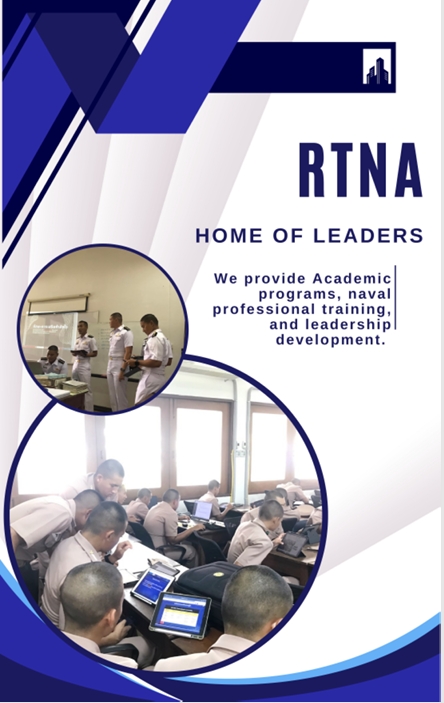Transformational Leadership Influencing Work Engagement of Generation Y in Bangkok Metropolitan and Subarban Areas
Keywords:
Transformational Leadership, Work Engagement, Generation YAbstract
The objectives of this research were: 1) to study the transformational leadership and work engagement.; 2) to compare job engagement based on demographic characteristics.; 3) to study the influential transformational leadership on job engagement. The sample was working people aged between 25 - 45 years working in Bangkok and outskirts. The research tool was a questionnaire. The statistics used were frequency, percentage, means, standard deviation, t-test, Independent Sample (One-Way ANOVA), LSD (Least Significant Difference) and Multiple Regression with a statically significant level .01. The results showed that 1) the transformational leadership characteristics and overall work engagement were at a high level. 2) Demographic characteristics such as education level, duration of employment, and work position showed differences in work engagement at the statistical significance level of .01. 3) Ideological Influence leadership styles, intellectual stimulation leadership style, and the individualistic leadership style influencing Generation Y's job engagement were able to predict 65.80 percent. The equation for the standard score was Z=0.276 (X1) +0.165 (X2) +0.387 (X3).
References
พิชชาภา เกาะเต้น. (2563). ผลกระทบของการทำงานเป็นทีม ภาวะผู้นำการเปลี่ยนแปลง และการรับรู้การสนับสนุนจากองค์การ ที่ส่งผลต่อความผูกพัน และประสิทธิภาพในการปฏิบัติงานของพนักงาน บริษัท โตโยต้านครธน. [วิทยานิพนธ์ปริญญาบริหารธุรกิจมหาบัณฑิต สาขาบริหารธุรกิจ]. มหาวิทยาลัยศิลปากร.
พลกฤต รักจุล. (2563). การศึกษาอิทธิพลของภาวะผู้นำการเปลี่ยนแปลง ความผูกพันที่มีผลต่อความตั้งใจจะคงอยู่ของพนักงานในธุรกิจร้านสะดวกซื้อของประเทศไทย. [วิทยานิพนธ์ปรัชญาดุษฎีบัณฑิต สาขาวิชาการบริหารธุรกิจ]. มหาวิทยาลัยแม่โจ้.
พลกฤต รักจุล, ประภัสสร วรรณสถิต, กัญญ์พัสวี กล่อมธงเจริฐ และชัยวัฒน์ ใบไม้. (2564). การพัฒนาแบบวัดความผูกพันของพนักงานในร้านสะดวกซื้อในเขตภาคเหนือ. วารสารสังคมศาสตร์และมานุษวิทยาเชิงพุธ, 6(2), 319-331.
มัลลิกา บุนนาค. (2551). สถิติเพื่อการวิจัยและตัดสินใจ. (พิมพ์ครั้งที่ 7). ศูนย์หนังสือแห่งจุฬาลงกรณ์มหาวิทยาลัย.
วรนุช วงศ์เจริญ, ปราณี มีหาญพงศ์ และจันทร์จิรา วงษ์ขมทอง. (2561). ความสัมพันธ์ระหว่างปัจจัยส่วนบุคคล ภาวะผู้นำการเปลี่ยนแปลงและการปฏิบัติของหัวหน้าหอผู้ป่วยกับความผูกพันในงานของพยาบาลวิชาชีพในโรงพยาบาลชุมชน. วารสารคณะพยาบิลศาสตร์ มหาวิทยาลัยบูรพา, 26(3), 23-31.
วิรวรรณ ฉิมพลี, กุลวดี อภิชาตบุตร และบุญพิชชา จิตต์ภักดี. (2563). ภาวะผู้นำใฝ่บริการของหัวหน้าหอผู้ป่วยและความผูกพันในงานของพยาบาลวิชาชีพ โรงพยาบาลศูนย์ เขตภาคเหนือ. วารสารพยาบาลสาร, 47(1), 361-373.
วสุ สุวรรณวิหค และดิเรก ปัทมสิริวัฒน์. (2565). เศรษฐกิจจังหวัดและการจ้างานในประเทศไทย: วิเคราะห์ภาพรวมและรายภูมิภาค. Journal of Roi Kaensarn Academi, 8(1), 14-26.
สุภาพร ตันสกุล. (2563). ความพึงพอใจในการปฏิบัติงานและความผูกพันในงาน กรณีศึกษา: กรมส่งเสริมสหกรณ์ในเขตตรวจราชการที่ 5. [วิทยานิพนธ์ปริญญาธุรกิจมหาบัณฑิต สาขาวิทยบริการเฉลิมพระเกียรติ]. มหาวิทยาลัยรามคำแหง.
อรวรรณ ภัทรดำเนินสุข. (2564). ภาวะผู้นำการเปลี่ยนแปลงของผู้บริหารกับแรงจูงใจในการปฏิบัติงานของ ครูในสถานศึกษา สังกัดสำนักงานเขตพื้นที่การศึกษาประถมศึกษาสมุทรสงคราม. [วิทยานิพนธ์ปริญญาศึกษาศาสตรมหาบัณฑิต สาขาวิชาการบริหารการศึกษา]. มหาวิทยาลัยศิลปากร.
Allen, N. J., & Meyer, J. P. (1996). Affective, continuance, and normative commitment to the organization: An examination of construct validity. Journal of Vocational Behavior, 49(3), 252–276.
Ariyani, N., & Hidayati, S. (2018). Influence of transformational leadership and work engagement on innovative behavior. Etikonomi, 17(2), 275-284.
Bass, B. M., & Avolio, B. J. (Eds.) (1994). Improving organizational effectiveness through transformational leadership. Sage Publications.
Bui, T.M., Zeng, Y., & Higgs, M. (2017). The role of person-environment fit in the relationship between transformational leader and job engagement amongst Chinese knowledge workers. Journal of Management Psychology, 32(5), 373-386.
Christian, M. S, Garza, A. S., & Slaughter, J. E. (2011). Work engagement: A quantitative review and test of its relations with task and contextual performance. Personnel Psychology, 64(1), 89–136.
Cochran, W.G. (1977). Sampling techniques. (3rd ed.). John Wiley & Sons.
Drucker, P.F. (1954). The Practice of management. Harper & Row.
Meyer, J., Stanley, D., Herscovitch, L. & Topolnytsky, L. (2002). Affective, continuance, and normative commitment to the organization: A meta-analysis of antecedents, correlates, and consequences. Journal of Vocational Behavior, 61(1), 20-52.
Nunnally, J. C. (1978). Psychometric theory. (2nd ed.). McGraw-Hill.
Rovinelli, R. J., & Hambleton, R. K. (1997). On the use of content specialists in the assessment of criterion-referenced test item validity. Dutch Journal of Educational Research. 2, 49-60.
Schaufeli, W., & Bakker, A. B. (2004). Job demands, job resources, and their relationship with burnout and engagement: A multi-sample study. Journal of Organizational Behavior, 25(3), 293-315.

Downloads
Published
Issue
Section
License
Copyright (c) 2024 Royal Thai Naval Academy

This work is licensed under a Creative Commons Attribution-NonCommercial-NoDerivatives 4.0 International License.
The author has the sole responsibility for the material published in RTNA Journal of Social Sciences, Humanities, and Education, which the editorial team may not agree on that material.
RTNA Journal of Social Sciences, Humanities, and Education owns the copyright of the text, the illustration, or other material published in the journal. No parts or the whole of the material published may be disseminated or used in any form without first obtaining written permission from the academy.





